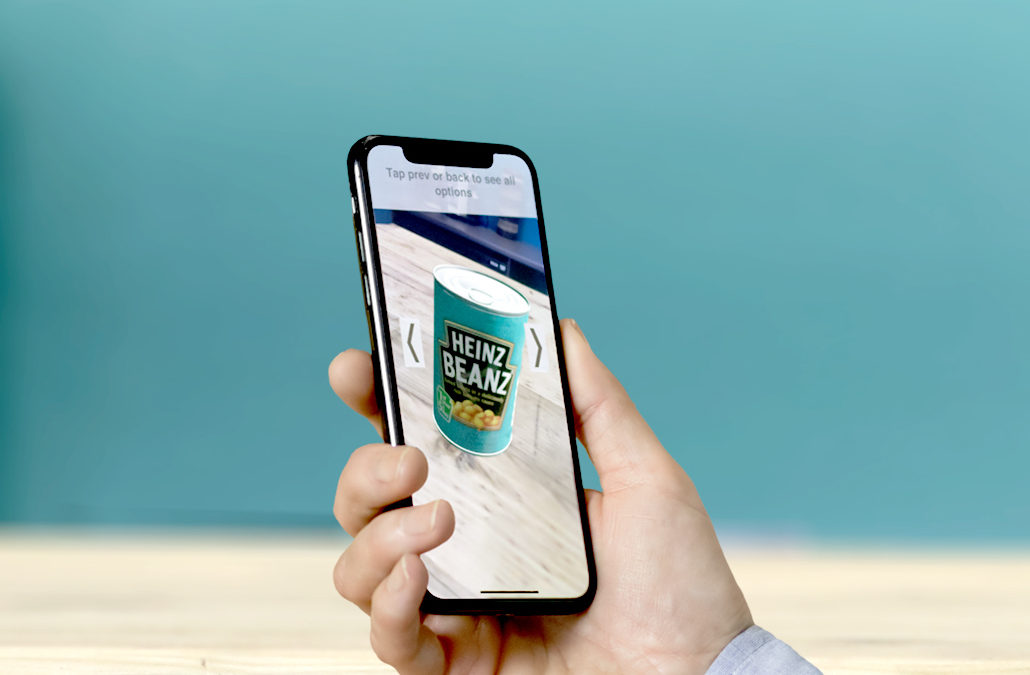When a brand conducts research into packaging design, it needs to be as realistic as possible in order for respondents to provide realistic feedback. The more realistic the pack is, the more confident the brand is with a design that consumers will love in the real world. If brands get this wrong it directly impacts sales and – the uncomfortable fact is – 85% of new FMCG products fail. How can brands be confident that FMCG packaging research will translate into sales?
Traditional pack tests commonly involve printed images of new pack designs, digital versions viewed on a computer screen and physical 3D prototypes in focus groups. The latter is the most realistic however the time and cost of creating physical 3D models to show to a small sample of respondents isn’t always practical. Researchers are therefore using immersive technology to quickly and cost-effectively create ‘physical’ 3D models which anyone, anywhere, can view on a smartphone.
Augmented reality (AR) enables respondents to view realistic 3D products in real world context. The AR product ‘sticks’ to a physical surface so respondents can view shampoo on their bathroom shelf, washing-up liquid in their cupboard or a tin of baked beans on a supermarket shelf. They view products from all angles, change pack designs and select their favourite. For the first time, qualitative FMCG packaging research can be delivered at quantitive scale.
In a study by Pallavicini et al (2016), researchers showed respondents an item of food in three different forms; the physical food, a picture of the food and an AR version of the food. Respondents were asked to rate the different experiences and physiological measures were taken to understand their reaction to each of the experiences. The results, unsurprisingly, showed that people had a much stronger response to the real food compared to a picture of the food. The experience of the augmented reality food, however, was reported as being the same as the real food and, more importantly, the physiological responses were similar. Put simply, people’s reaction to AR food was the same as the real thing.
This is because of a psychological phenomenon called ‘presence’. Presence is the sense of ‘being there’ and is felt when a person is immersed in a specific context. It is often talked about in terms cinema or theatre and is also the key benefit of virtual reality. Similarly, augmented reality has the ability to make objects feel present. This is because AR integrates 3D digital objects into the real world and they dynamically change when people interact. In the study, the food felt present when viewed in augmented reality because the respondents could explore it from different angles and the augmented food responded to their movements.
FMCG packaging research is designed to make products look appealing as packs are an important interface between a brand and a consumer at the moment of purchase. AR pack tests allow respondents to feel as if a pack is actually there. Their cognitive and emotional reactions are the same as if they’re experiencing the physical pack itself. Adding context further creates more realistic research into new pack designs as AR packs can be researched in the kitchen at home or on supermarket shelves. The benefits are significant as it allows researchers to make new designs feel real to large numbers of respondents. In many cases, it’s quicker and more cost effective than traditional methods and, importantly, augmented reality enables brands to make confident decisions about which pack designs are most likely to sell.


Recent Comments